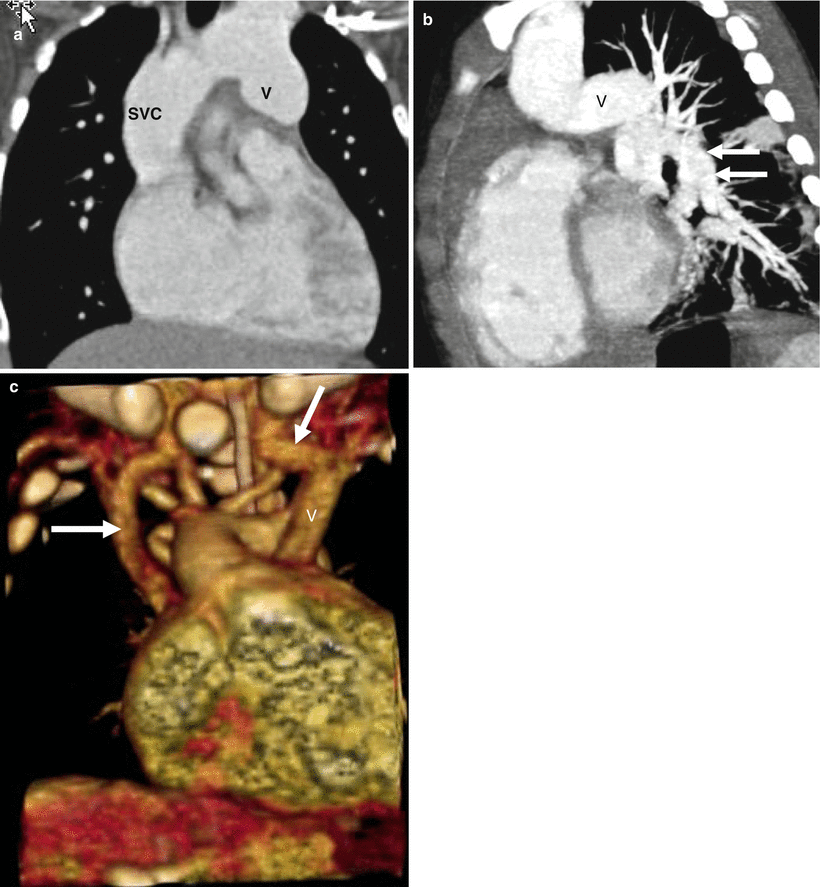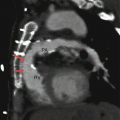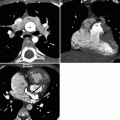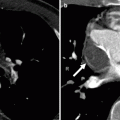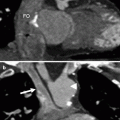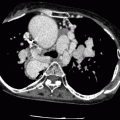, Marilyn J. Siegel2, Tomasz Miszalski-Jamka3, 4 and Robert Pelberg1
(1)
The Christ Hospital Heart and Vascular Center of Greater Cincinnati, The Lindner Center for Research and Education, Cincinnati, OH, USA
(2)
Mallinckrodt Institute of Radiology, Washington University School of Medicine, St. Louis, Missouri, USA
(3)
Department of Clinical Radiology and Imaging Diagnostics, 4th Military Hospital, Wrocław, Poland
(4)
Center for Diagnosis Prevention and Telemedicine, John Paul II Hospital, Kraków, Poland
Abstract
Pulmonary venous anomalies comprise a spectrum of abnormalities characterized by the abnormal number, connection, or drainage of pulmonary veins.
17.1 Pulmonary Venous Anomalies
Pulmonary venous anomalies comprise a spectrum of abnormalities characterized by the abnormal number, connection, or drainage of pulmonary veins.
The spectrum of pulmonary venous anomalies includes (a) partial anomalous pulmonary venous return (PAPVR), (b) total anomalous pulmonary venous return (TAPVR), (c) common pulmonary vein atresia, (d) pulmonary venous stenosis, and (e) pulmonary varix. See Table 17.1.
Table 17.1
Types of pulmonary venous anomalies
Partial anomalous pulmonary venous connections (PAPVC) |
Total anomalous pulmonary venous connections (TAPVC) |
Common pulmonary vein atresia |
Pulmonary venous stenosis |
Pulmonary varix |
17.1.1 Partial (Incomplete) Anomalous Pulmonary Venous Return
In partial anomalous pulmonary venous return (PAPVR), one or more pulmonary veins connect with the right atrium or one of its tributaries (venae cavae, azygos vein, coronary sinus, right atrium, portal vein, and hepatic veins) [1]. This anomaly results from persistence of fetal pulmonary venous drainage into the right atrium or systemic veins. The anomalous connection causes a left-to-right shunt that can lead to clinically significant hemodynamic changes. PAPVR may occur in isolation, but more often it is associated with a sinus venosus type of atrial septal defect (ASD). As an isolated anomaly, PAPVR is often asymptomatic. When both PAPVR and a septal defect are present, the shunt is more likely to lead to cardiovascular symptoms and pulmonary arterial hypertension.
The anomalous right upper lobe (RUL) pulmonary vein usually drains into the superior vena cava (SVC) or the SVC right atrial junction. In up to 90 % of cases, a sinus venosus ASD is also present [1, 2]. See Figs. 17.1 and 17.2.
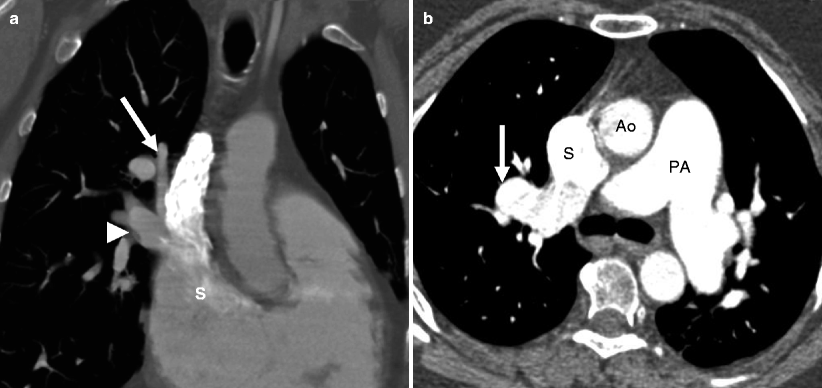
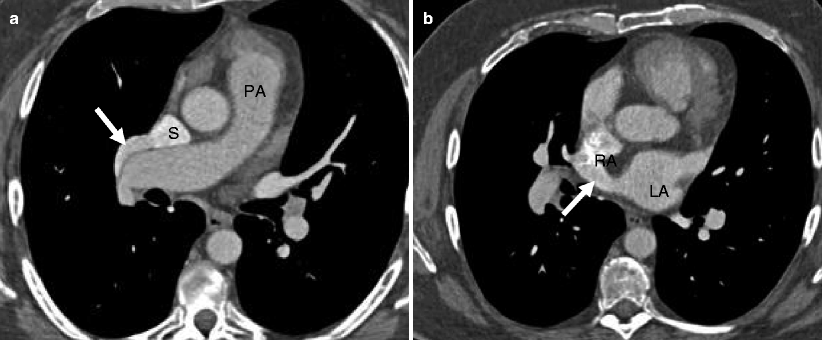

Fig. 17.1
Panel (a) shows an anomalous right upper lobe and right middle lobe venous return. This maximum intensity projection shows the right upper lobe pulmonary vein (arrow) and right middle lobe pulmonary vein (arrowhead) draining into the superior vena cava (S). Panel (b) illustrates an anomalous right upper lobe and right middle lobe pulmonary venous return. The axial image in panel (b) shows the right upper lobe pulmonary vein (arrow) draining into the superior vena cava (S). The pulmonary arteries are dilated due to the left-to-right shunt. PA pulmonary artery, Ao aorta

Fig. 17.2
Anomalous right upper lobe venous return and sinus venosus atrial septal defect. Panel (a) is an axial image showing the right upper lobe pulmonary vein (arrow) draining into the superior vena cava (S). Panel (b) is a scan reconstructed at a lower level showing the contrast-filled sinus venosus atrial septal defect (arrow) between the right atrium (RA) and left atrium (LA). PA pulmonary artery
An anomalous right lower lobe pulmonary vein usually drains into the inferior vena cava (IVC) or occasionally into the portal or hepatic veins (Fig. 17.3). When the anomalous drainage is associated with right lung and pulmonary artery hypoplasia, ipsilateral mediastinal shift, and cardiac dextroposition and/or dextrorotation, it is termed “scimitar, venolobar, or hypogenetic lung syndrome” [3, 4]. See Fig. 17.4. The term “scimitar” refers to the curved appearance of the anomalous pulmonary vein, which resembles a Turkish scimitar (a curved saber). Other anomalies in the spectrum of “scimitar” syndrome include arterial subdiaphragmatic supply to the right lower lobe and horseshoe lung. In the latter anomaly, the posterobasal segments of both lungs are fused behind the pericardial sac.
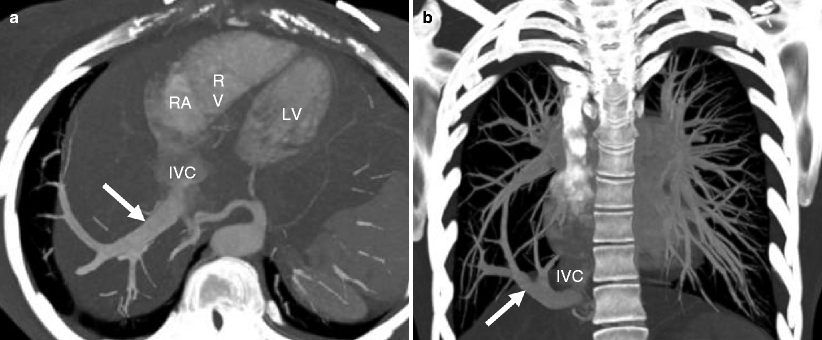
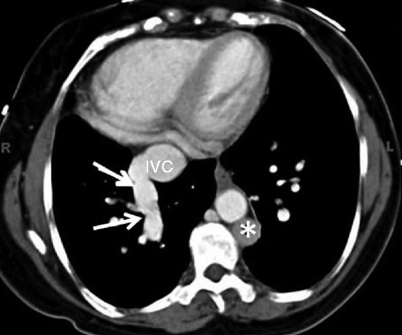

Fig. 17.3
Anomalous right lower lobe venous return. Panel (a) is an axial image, while panel (b) is a coronal section. Both show the anomalous right lower lobe pulmonary vein (arrows) draining into the inferior vena cava (IVC). RA right atrium, RV right ventricle, LV left ventricle

Fig. 17.4
Scimitar syndrome. An axial CT image shows the anomalous right lower lobe pulmonary vein (arrows) draining into the inferior vena cava (IVC), a small right lung, and cardiac dextroposition. This patient also has hemiazygos continuation of the inferior vena cava (asterisk)
The anomalous left upper lobe pulmonary vein drains into the brachiocephalic or innominate vein via a vertical vein, which is the remnant of the left cardinal system (Fig. 17.5). PAPVR from the left upper lobe needs to be distinguished from a persistent left superior vena cava. The left pulmonary vein will be seen anterior to the left main bronchus in patients with left superior vena cava, whereas in PAPVR there is no pulmonary vein superior to the bronchus. In addition, the persistent left superior vena cava drains into a dilated coronary sinus.
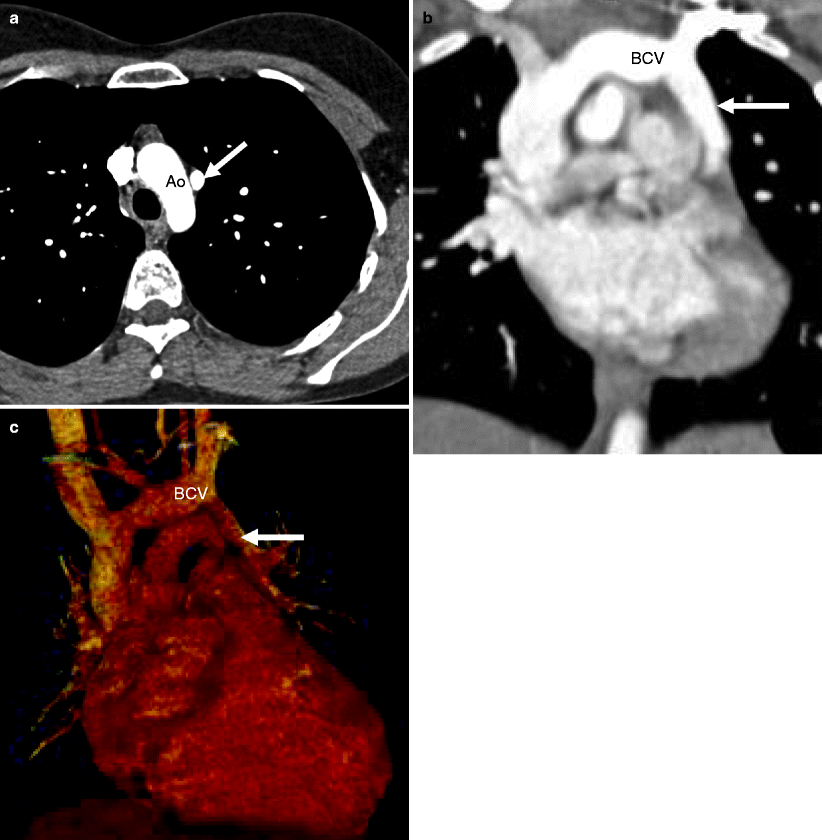

Fig. 17.5
Anomalous left upper lobe venous return. Panel (a) a transverse image shows an abnormal vessel to the left of the aortic arch which is the vertical vein (arrow). Panel (b), an oblique axial scan, and panel (c), a 3D image, both show the vertical vein (arrow) draining into the left brachiocephalic vein (BCV). Ao aorta
The corrective surgical strategy involves redirection of the anomalous pulmonary veins to the left atrium or atrial appendage and closure of the intracardiac communication, if present (Fig. 17.6). Other options for repair of left upper lobe PAPVR include systemic vein translocation (referred to as a Warden procedure, which involves relocation of the superior vena cava to the right atrial appendage), creation of an ASD, and coronary sinus unroofing with baffle connection to the left atrium.
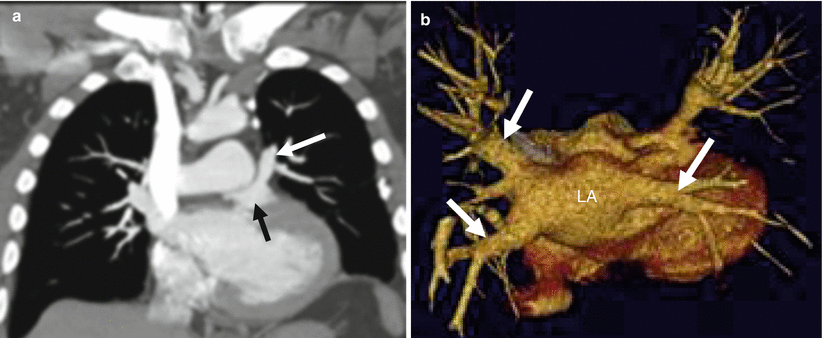

Fig. 17.6
Repair of anomalous left upper lobe venous return. Panel (a) a coronal image, shows reimplantation of the anomalous superior right pulmonary vein (white arrow) into the left atrial appendage (black arrow). Panel (b) an axial 3D scan shows that the inferior left and superior and inferior right pulmonary veins (arrows) are in normal locations draining into the posterior aspect of the left atrium (LA). The superior right pulmonary vein is not seen draining into left atrium proper in this image as it normally should
17.1.2 Total (Complete) Anomalous Pulmonary Venous Return
In total anomalous pulmonary venous return (TAPVR), all pulmonary veins fail to connect to the left atrium. Pulmonary venous drainage is to the right atrium or its tributaries via primitive connections [5]. An atrial septal defect is virtually always present and allows blood to reach the left heart. This anomaly occurs when the embryologic common pulmonary vein does not join the left atrium.
There are two classifications of TAPVR: (1) embryologic and (2) anatomic. Embryologically, TAPVR is divided into four groups based on connection sites of the embryologic common vein, which include (a) right atrium, (b) right common cardinal system (vena cava or azygos vein), (c) left common cardinal system (left innominate vein, coronary sinus), and (d) umbilicovitelline system (portal vein, ductus venosus) [1, 6]. The anatomic classification scheme is based on the anatomic route of venous drainage, which is classified as (a) type I, supracardiac level (connecting to the right or left superior vena cavae or their tributaries); (b) type II, cardiac level (connecting to the coronary sinus or right atrium); (c) type III, infracardiac level (connecting to the inferior vena cava or its tributaries); and (d) type IV, mixed level (combination of a–c) [7]. See Fig. 17.7.

